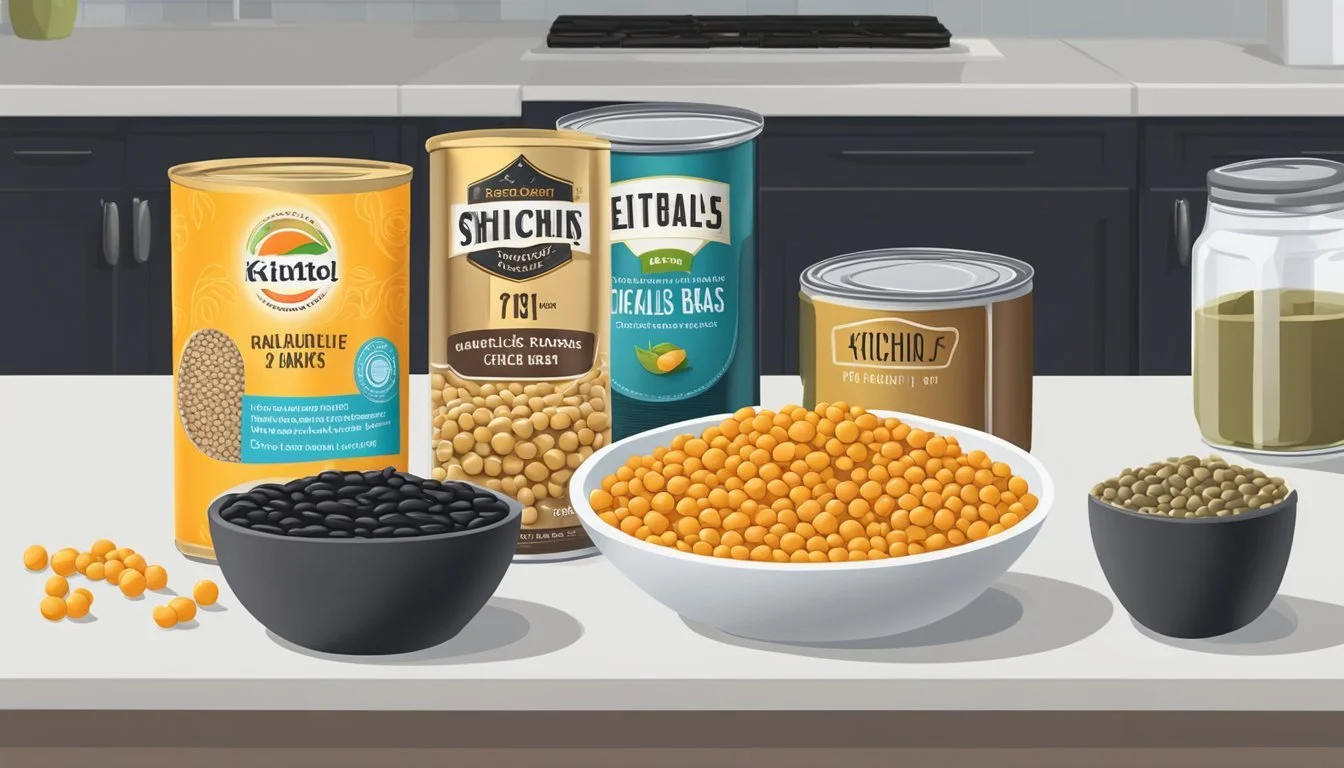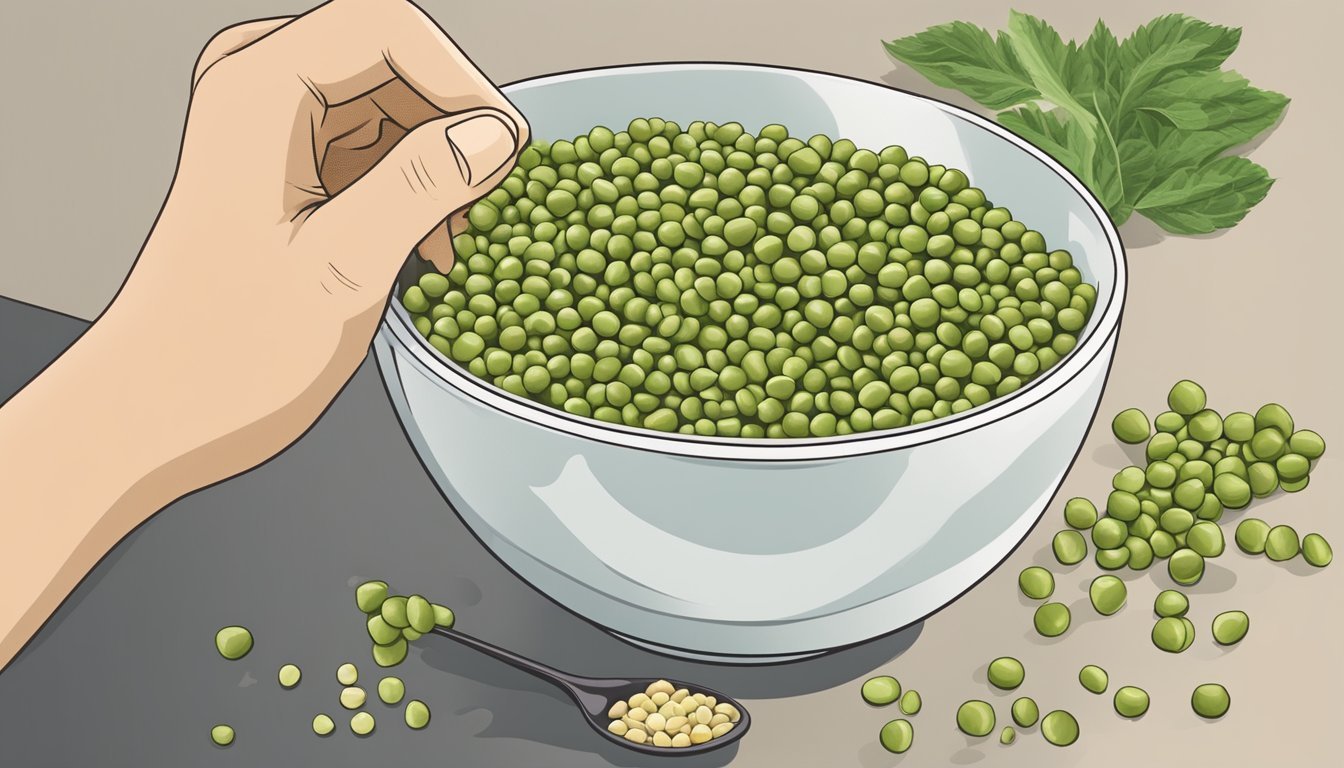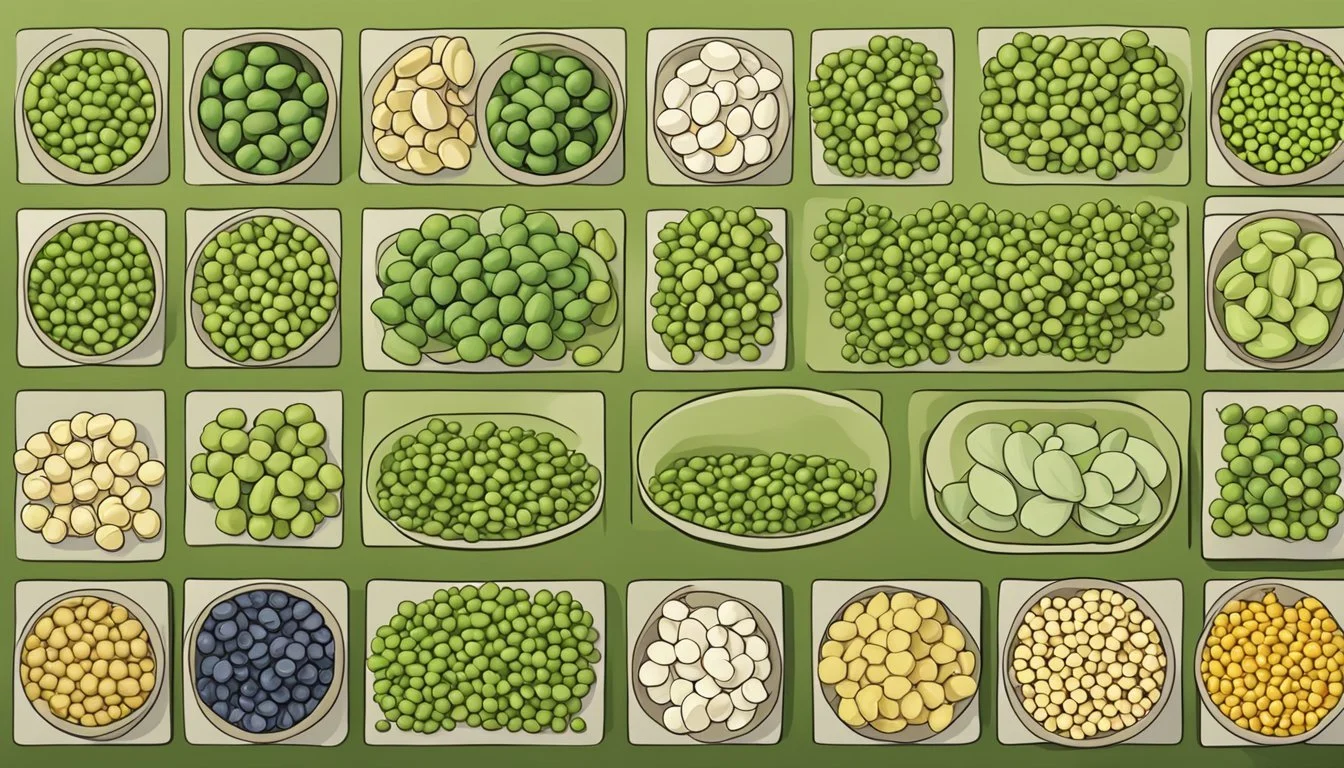Split Peas Substitutes
Best Alternatives for Your Recipes
Cooking enthusiasts often find themselves in need of substitutes for split peas when they’re not readily available. Whether it's for a comforting bowl of soup, a side dish, or even a hearty salad, lentils are an excellent substitute for split peas due to their similar taste and texture. They offer a rich, earthy flavor and come in various colors, including green, brown, red, and black, adding both nutrition and visual appeal to dishes.
Another versatile substitute for split peas includes lima beans, which possess a creamy consistency and hearty flavor when cooked. They can easily be found in most grocery stores, making them a convenient choice. Yellow split peas can often be substituted for green ones, bringing unique textures and flavors to various recipes.
For those experimenting in the kitchen, exploring different legumes can open up a world of culinary possibilities. Substitutes such as lentils and lima beans not only match the texture and taste of split peas but also enhance the nutritional value of your dishes. This flexibility in ingredients can lead to delightful new takes on traditional recipes.
Understanding Split Peas
Split peas are a type of legume that come in two primary varieties: green and yellow. They are valued for their high protein and fiber content, as well as their versatility in various recipes.
Characteristics of Split Peas
Green split peas and yellow split peas are the most common types. Both exhibit a sweet, nutty flavor.
Green split peas are slightly sweeter, whereas yellow ones have a milder taste. The texture of cooked split peas is creamy, making them ideal for thickening dishes.
They are available dried and can be stored for long periods, making them a convenient pantry staple. Split peas cook faster than whole peas due to their split nature, which allows water to penetrate more easily.
Culinary Uses
Split peas are widely used in soups and stews. They break down during cooking, adding a rich texture and flavor. Classic examples include split pea soup and dahl.
In addition to soups and stews, split peas can be used to make dips, similar to hummus, and as a base for curries. They also serve as an excellent addition to salads and side dishes, providing a hearty feel.
Their versatility extends to many cuisines, making them a globally recognized ingredient.
Nutritional Profile
Split peas are a powerhouse of essential nutrients. They are rich in protein and fiber, making them a great choice for vegetarians and anyone looking to add more plant-based proteins to their diet.
A serving of split peas offers significant amounts of iron, magnesium, and other vital vitamins and minerals. They are low in calories and fat, making them a nutritious option for various dietary needs.
Including split peas in meals can help in maintaining a balanced diet, promoting satiety, and supporting overall health.
Common Split Pea Substitutes
For those looking to replace split peas in a recipe, a variety of alternatives can provide similar textures, flavors, and nutritional benefits. The main substitutes include lentils, beans, other legumes, and even certain grains and cereals.
Lentils
Lentils, including red and green varieties, are a popular substitute for split peas. They offer a similar earthy flavor and creamy texture when cooked. Red lentils cook faster and tend to become mushy, making them ideal for soups and stews. Green lentils hold their shape better and provide a slightly firmer texture. Both types are high in protein and fiber, making them nutritious alternatives. Cooking times for lentils are generally shorter compared to split peas, with red lentils taking around 15-20 minutes and green lentils around 30-40 minutes.
Beans
Beans such as lima beans, kidney beans, black-eyed peas, and cannellini beans can also serve as substitutes for split peas. Lima beans, for example, offer a similar creamy consistency and hearty flavor. Kidney beans and black-eyed peas provide a stronger, more robust flavor and maintain a firmer texture when cooked. Chickpeas (garbanzo beans) are slightly nuttier and can add a different dimension to dishes. Cooking times vary: kidney beans and black-eyed peas usually take 60-90 minutes, while chickpeas may need about 1.5-2 hours unless pre-soaked.
Other Legumes
Other legumes like mung beans and navy beans are also excellent substitutes. Mung beans have a mild, sweet flavor and cook relatively quickly, typically in about 20-30 minutes. Navy beans are small, white beans with a smooth texture, often used in soups and stews, cooking in approximately 60-90 minutes. Pinto beans can also be used, offering a rich, earthy flavor and taking about 90 minutes to cook. These legumes provide high levels of protein and fiber, similar to split peas.
Grains and Cereals
Grains like rice, barley, and quinoa can act as unconventional but effective substitutes for split peas. Rice is versatile and can be cooked to a soft consistency, providing a neutral backdrop for other flavors. Barley has a chewy texture and nutty taste, ideal for soups and stews, needing about 45-60 minutes to cook. Quinoa cooks quickly in about 15-20 minutes and adds a light, fluffy texture along with a punch of protein and fiber. These grains can complement a variety of dishes where split peas are typically used.
Specialized Substitutes
Specialized substitutes can significantly enhance dishes by achieving the desired texture, flavor, and culinary effect. The right alternative depends on the specific dish, regional preferences, or the need for a certain texture.
For Specific Dishes
Different dishes require different substitutes for split peas. Hummus benefits from using lima beans for a creamy texture. In curries and soups, pigeon peas work well due to their starchy consistency, adding robustness to the dish. Risotto and pasta dishes can be enriched with fava beans, which absorb flavors well while providing a coarse, creamy texture. For fried rice and other stir-fries, black beans provide slight crunch and a hearty flavor.
Regional Alternatives
Regional substitutes for split peas can add a cultural twist to the dish. In Asian cuisine, mung beans are often used due to their small size and smooth texture, making them ideal for soups and stews. Fava beans are prevalent in Mediterranean dishes, offering a nutty flavor and starchy consistency. Pigeon peas are common in Caribbean and Indian cooking, particularly in dhal and rice dishes, adding a rich, earthy taste.
Regional Substitute Common Cuisine Attributes Mung Beans Asian Smooth texture, cooks quickly Fava Beans Mediterranean Nutty flavor, starchy Pigeon Peas Caribbean/Indian Earthy taste, versatile in use
Texture-Based Substitutes
The texture of split peas can be crucial in achieving the right culinary outcome. For a creamy texture, lima beans and yellow lentils are excellent choices. Lima beans offer a broadly similar creamy consistency when cooked, ideal for dips and soups.
Yellow lentils cook quickly and break down into a smooth paste, suitable for hummus and curry bases. For a dish requiring starchier consistency, pigeon peas and fava beans serve well. Pigeon peas add a hearty texture to stews, whereas fava beans are great for dishes needing a delicate balance between creaminess and graininess.
Black beans can add structural contrast and slight crunch to dishes like fried rice and stir-fries, making them a versatile texture substitute.
Preparing Substitutes
When looking to prepare substitutes for split peas in recipes, key factors to consider include the cooking techniques required, how flavors will be affected, and adjustments needed for consistency and taste.
Cooking Techniques
When substituting split peas with other legumes, understanding the appropriate cooking methods is crucial. Lentils are a popular alternative due to their similar texture and cooking time. They generally boil for 15-20 minutes and can then be simmered until tender.
Lima beans offer a comparable creamy consistency, but require soaking for 6-8 hours prior to cooking. Afterwards, they should be boiled for about 45 minutes.
Using different types of split peas, like yellow instead of green, involves similar cooking methods but may result in slight textural and flavor variations.
Flavor Considerations
Substituting split peas involves maintaining or complementing the original flavor profile of the dish. Lentils provide an earthy flavor similar to split peas and are versatile in both sweet and savory recipes.
Lima beans have a milder, slightly sweet taste which enhances soups and stews without overpowering other ingredients.
Color variations in substitutes can also affect the dish's appearance. For instance, yellow split peas offer a sweeter, nuttier flavor compared to the earthiness of green split peas. Selecting the right legume ensures the substitute meshes well with the intended flavor.
Adjusting Recipes
When using substitutes, it’s essential to adjust the recipe to achieve the desired consistency and taste. Lentils might require less cooking time since they soften faster, so one should monitor the dish closely to avoid overcooking.
Lima beans generally require additional seasoning due to their milder flavor. Using a guide such as adding 1 teaspoon of salt per cup of beans can enhance the taste.
If using different split peas, the cooking time can remain the same, but slight adjustments in seasoning might be necessary to match the original recipe’s flavor profile. Adjusting liquid ratios can also help maintain consistency, as some legumes absorb more water than others.
Health and Nutrition
When considering substitutes for split peas, it's essential to understand the health and nutritional impacts of these alternatives. Different legumes offer various benefits in protein, fiber, and essential nutrients.
Comparative Nutritional Value
Different legumes vary in their nutritional profiles, but all are rich in protein and fiber. For example, lima beans provide a creamy texture comparable to split peas and are also a good source of protein. Lentils contain 63.4 grams of carbohydrates per 100 grams, with more fiber and less sugar than split peas.
A 196-gram serving of split peas offers over 20 grams of fiber, contributing to digestive health. They also provide around 16 grams of plant protein. The presence of essential vitamins and minerals, like iron and potassium, in these legumes supports overall body function effectively.
Storage and Shelf Life
Proper storage is essential to maximize the shelf life and maintain the quality of split peas and their substitutes. Different forms of storage, such as fresh, dried, and frozen, play a significant role in preserving these legumes.
Storing Split Peas and Alternatives
Dried Split Peas and Substitutes: Dried split peas and their substitutes (like lentils and chickpeas) should be stored in an airtight container in a cool, dry place, such as a pantry. Temperature control is crucial. Ideally, keep them between 50-70°F to prevent spoilage. Stored correctly, dried peas can last for up to a year. Vacuum sealing can extend this considerably, making them usable for up to 20 years if kept oxygen-free.
Fresh Split Peas - Uncommon but Important: Fresh split peas are rarer but should be stored similarly to green peas. Place them in the refrigerator's crisper drawer in a perforated bag, where they can stay fresh for about one week.
Frozen Peas: When freezing, spread peas initially on a baking sheet to prevent them from clumping together. Once frozen, transfer them to an airtight container or heavy-duty freezer bag. Label with the date; frozen peas typically last 6-8 months.
Maximizing Freshness
Handling: Always use clean, dry hands or utensils when handling split peas to avoid contamination. This is particularly crucial for peas stored for extended periods.
Air Circulation: Ensure proper air circulation to maintain the quality of stored peas. Overpacking containers or bags can lead to uneven freezing or spoilage.
Labeling: Label all storage containers and bags with the date of packaging. This helps in keeping track of the shelf life and ensures you use the oldest stock first, adhering to the first in, first out principle.
Environmental Control: Store dried legumes away from direct sunlight and areas with high humidity to prevent premature spoilage or sprouting.
Proper storage and attention to handling details help in preserving the flavor, nutritional value, and texture of split peas and their alternatives.
Exploring Pea Varieties
Exploring a variety of peas can enhance your culinary experiences with different flavors, textures, and nutritional benefits. Peas come in several forms, from fresh and sweet to starchy and savory.
Types of Peas
Peas include English peas, sugar snap peas, and snow peas. English peas are sweet and often used fresh, while sugar snap peas offer a crisp texture and edible pods. Snow peas are also consumed whole, with flat pods and a subtle flavor.
Other varieties like field peas and cranberry beans provide more starchy options. Edamame, young soybeans, add nutty flavors and protein. Fresh cranberry beans are versatile and rich in taste, while green beans and snap peas maintain a balance between starchy and sweet.
Choosing for Flavor and Texture
When selecting pea varieties, consider the desired flavor and texture. Sweet peas like English peas are ideal for fresh salads and garnishes due to their sweetness. Sugar snap peas offer a crunchy texture, perfect for stir-fries and raw snacks.
For hearty dishes, field peas and cranberry beans provide a robust, starchy texture. These varieties are excellent in stews and soups. Edamame is chosen for its nutty taste and high protein content, making it suitable for a variety of dishes from appetizers to main courses.
Lastly, green beans and fresh cranberry beans have a unique taste and are often used in diverse culinary applications, from side dishes to hearty mains.







